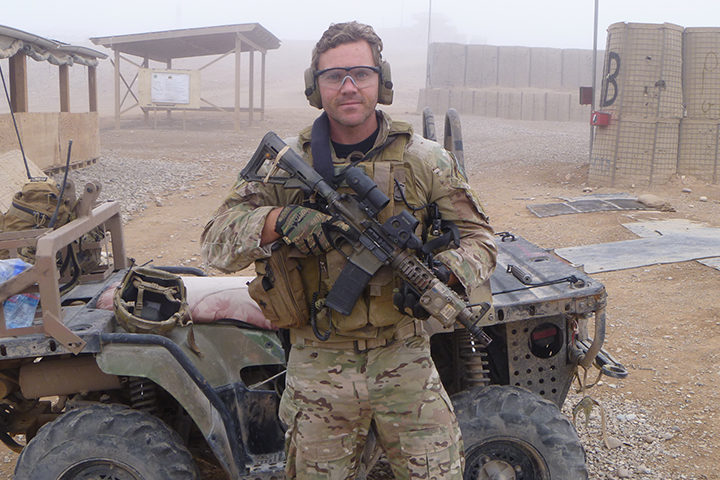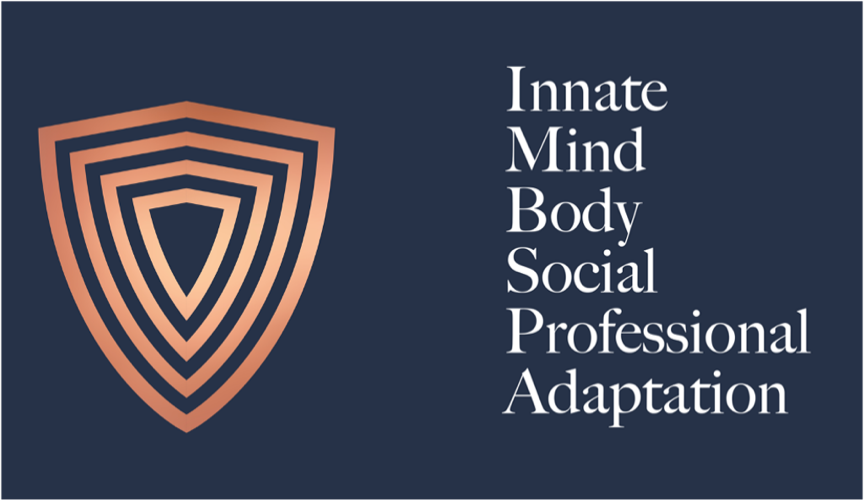Tackle stress like the SAS, Part 1: Building your professional resilience
Avant media
Tuesday, 14 September 2021

The great Stoic philosopher Epictetus said “It’s not what happens to you, but how you react to it that matters”.
As a doctor, you would be no stranger to stress. And sometimes, in the course of your practice of medicine, you might also experience traumatic events. As unavoidable as this may be, what is fully within your control is how you respond and move beyond the experience.
Dr Dan Pronk, a former Army Major and Regimental Medical Officer with the Commandos and SAS, who served on four tours of Afghanistan knows the all-encompassing impacts of cumulative trauma. After five years with Special Forces, and losing mates in the field, Dan discharged to pursue civilian medicine, but struggled with post-traumatic stress. Exploring theories and therapies to overcome this, Dan started building his resilience, experiencing a more positive outcome of trauma: post-traumatic growth.
Dan’s discoveries led him to collaborate with his brother Ben, and Tim Curtis – all SAS veterans – on a website and book called The Resilience Shield.
How ‘The Resilience Shield’ works
It doesn't matter if your stress is from being with the SAS or being a busy GP churning through short consults, or an emergency doctor, Dan says. “Stress is stress, resilience is resilience. The same principles are universal. When I looked at the literature, it started to fit pretty neatly into layers. All these things we know are causative, or at least correlative of, resilience. So, we mapped it into layers: innate, mind, body, social, professional and adaptation, and we've built this model of resilience.”

In a two-part series, we’ll share some of Dan’s insights from his recent talk for Avant, to help you build resilience in your own life and work. First, we’ll look at how to build your social and professional resilience. Part two will look at building your personal resilience.
THE SOCIAL LAYER
Strong social supports are critical to resilience. And while having the support of a good work team is important, Dan emphasises it’s your family and friends that matter most.
1. Your job won’t love you back
“You need to keep that perspective on work. I know everyone in the medical profession is very invested in their work and you need to be, but try and find that balance where you can,” he advises. “The job is not going to love you back and that's the harsh reality. Most jobs will chew you up, spit you out and … the human toll is often on your family.”
TIP: Invest in family and friends
- Keep work in perspective. It’s easy to get absorbed in the day-to-day stress and activity of a medical career, but it pays to regularly look at the bigger picture of your life and ensure you’re moving forward in other areas as well. Focus on maintaining an identity outside of your role.Make sure you still know who you are when you take the stethoscope off from around your neck!
- Use transitions between work and home: Don’t bring your work home, have some punctuation between your work and your family life. This can be as simple as a few mindful breaths on the trip home, or ideally some exercise in between work and home.
- Listen to your loved ones – they may have the perspective you lack.
- But don’t expect loved ones to understand your work. It’s not that they don’t want to, it’s just that having not shared your experiences, they simply can’t.
Hear more from Dr Pronk on the ‘social layer’ in this 4 min video.

Building your resilience shield
Social layer
THE PROFESSIONAL LAYER
Professionally, you can build resilience to specific stressors of your role through reality-based training, Dan says.
2. Training as stress inoculation
“The key things are to generate as much realism and relevance as you can and induce stress – this is a stress inoculation. So, we do it over and over … get involved in the training, learn from it … If you're in a position to organise training for junior doctors, get in there and do it, because as much of that stress inoculation as you can get really reduces that perceptual stress and helps you tip the stress-resilience scale.”
TIP: Make training real and relevant
- Reality-Based Training, or training as you’re going to fight, is the best way to program yourself to function well in high-stress situations when the adrenaline is pumping. The more you have practised a skill, the more likely it will be available to you under duress. This programming of skills into unconscious competence, requires lots of repetition of dedicated training, in scenarios as realistic as possible to the environment you’ll be working in. For instance, if you work in a GP clinic, practise scenarios responding to a cardiac arrest in your waiting room. Make sure everyone knows where the defib and emergency equipment is, and what their roles will be on the day. Physically get everything out and if possible, use a mannequin to perform CPR, simulate defib and IV access. Don’t assume it will be OK on the day!
- Replicate scenarios as realistically as possible and make them relevant. But if you have to choose between the two, go for relevance. You don’t need huge budgets or to allocate hours for training, 15-20 minutes of relevant training done regularly can make a profound difference to competence under adversity. If no-one is organising training for you, organise some yourself.
- Be vulnerable, and willing to fail in training. Don’t let your ego prevent you from reaping the benefits of training, especially the valuable lessons learnt from failure. It’s much better to fail on a mannequin, than on a real person because you didn’t maximise the opportunity to train.
3. After-action reviews for risk mitigation
Debriefing with your team as soon as possible after an event helps improve performance and reduce risk.
TIP: Act fast and keep it equal
- Reviews need to be non-judgemental and equal: let everyone have their say for a rounded, accurate interpretation of what happened.
- Look at the positives that need to be reinforced and the negatives that can be improved through training.
- When exploring negative outcomes, focus on systems rather than individuals. Keep asking the question ‘why?’ until the root-cause of the negative outcome is established. The aim is to improve the root-cause of the issue.
- Develop strategies that empower people to improve themselves and become more resilient to that stress the next time.
Hear more from Dr Pronk on the ‘professional layer’ in this 5 min video

Building your resilience shield
Professional layer
POST-TRAUMATIC GROWTH
We hear a lot about post-traumatic stress but, as Dan has experienced, the flip side is post-traumatic growth – harnessing your traumatic experience to grow from it and become a better version of yourself.
Hallmarks of post-traumatic growth:
- Increased appreciation of life, AKA gratitude.
- Changed priorities: what you used to think was important becomes less so.
- Closer personal relationships.
- Increased sense of resilience and personal strength, AKA ‘What doesn't kill you makes you stronger’.
- Spiritual development and / or a sense of meaning.
- Awareness of new possibilities in life.
Returning to the earlier Epictetus quote, we all have a degree of choice as to how we react to events. Medical careers expose us to many unique traumatic experiences. When acknowledged, processed (with professional help if required) and reframed correctly, these traumas can make us stronger. For example, if you’ve been involved in a critical incident and can use your lessons learnt to better prepare others for a similar incident, you have used your trauma for something positive.
When you do something meaningful with your trauma, you make it a growth experience, which not only increases your resilience, but can have a flow-on effect to your patients and loved ones.
Hear more from Dr Pronk on post-traumatic growth in this 4 min video

Building your resilience shield
Adaption layer
Take the Resilience Survey, for a scientifically backed summary of how your resilience scores against the Resilience Shield methodology.
For more health and wellbeing advice, including information on key support services visit Avant - Doctors' health and wellbeing